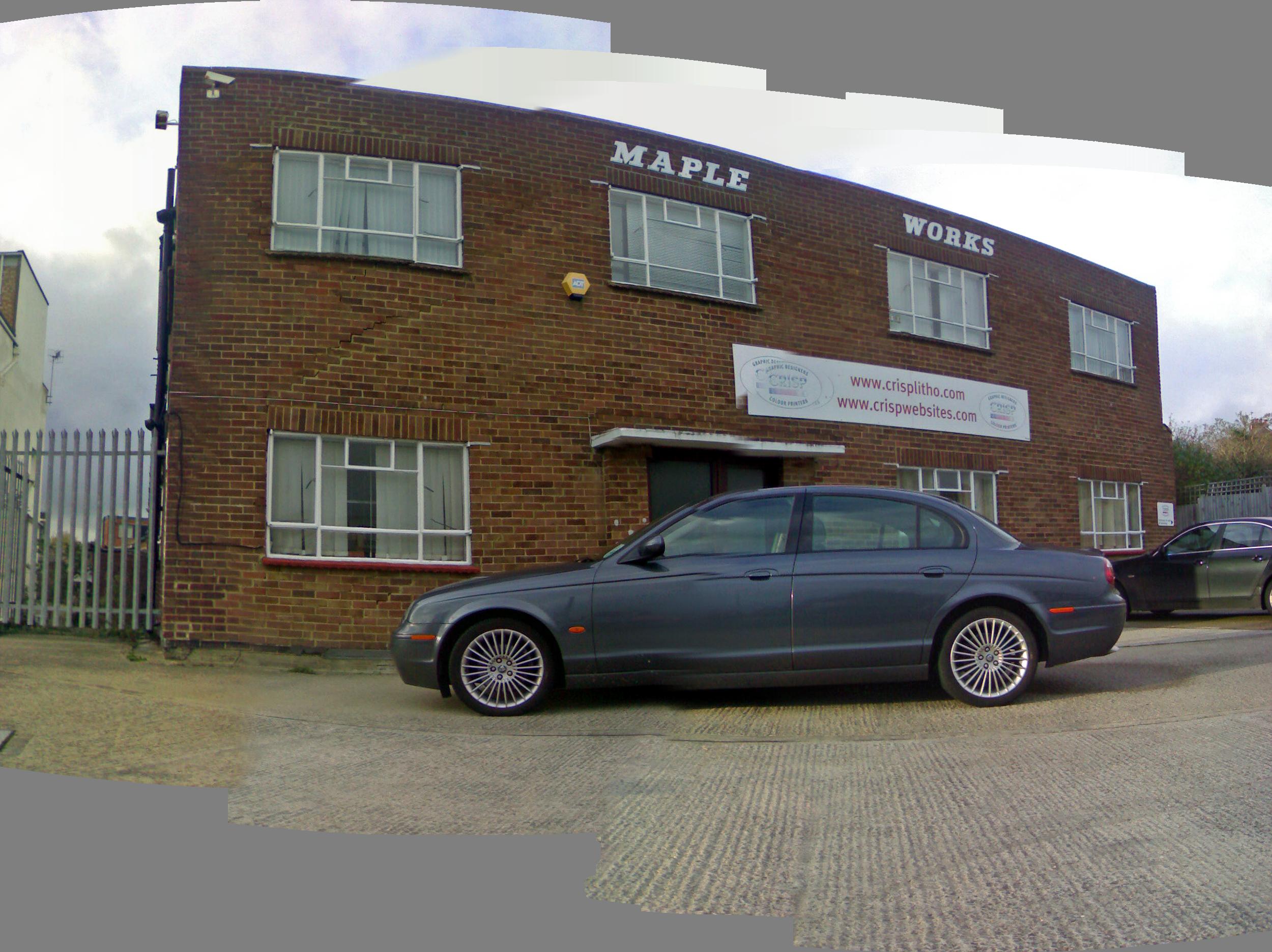That Sinking Feeling!
A Tale of The Maple Works, Anti-Tank
Defences and Subsidence.....

ABOVE: This is the Maple Works Building, on the Northern side of Old Shoreham Road, just opposite PC World in the present day. Because this a "stitched panoramic" photo and a diorama of 12 seperate photos, the curve of the photo belies the extent of the subsidence. However, there are little tell-tail signs. Look at the window at the bottom left corner: the brickwork under it has been replaced as though it were a doorway. But look at the crack above the window that runs diagonally between the two. In a straight photo, the windowframe on the bottom left actually slopes downwards!
As Geoff and I came to the end of our journey along the route of the Dyke Railway, we found The Maple Works. This building stands on the northern side of Old Shoreham Road, just opposite PC World and marks the spot where the railway passed under a bridge carrying the original Old Shoreham Road. To either side of the bridge were fairly deep cuttings, which have been filled in to raise the area to one unified level in the present day.
One of the unusual and unforseen problems that this has caused is subsidence: the ground has settled down and the surface area now has a dip in it as a result. This has caused a real problem for the structure of the Maple Works.
Walls need a certain amount of stability in order to remain upright, for example they need strength at their inner and outer faces, but also on their top and bottom edges. If this is not the case then some quite incredible things can happen.
I have seen walls that bow out under the weight of the sheer volume of soil which is being held back: one example in kind is the building in Uckfield High Street, just opposite Hooke Hall, where the wall is bowed but stable and has reached an outward angle of around 10 degrees in places, mightily impressive when it is realised that the wall is a few hundred years old.
However, what has happened in the case of the walls of Maple Works is that the stability has been lost in a different direction: the footings which the walls are constructed on have sunk. The reason for this is very obvious when we look a little more closely at the site's history.
We know that the cutting was filled in and this in itself would not usually present much of a problem if it was filled with hardcore or chalk and earth as is usually the case, because neither of these have a habit of settling very much. What has caused the problem is that the cutting was filled with Anti Tank Defences! These are large concrete cubes roughly 2 foot square along each side.
Whether they have degraded over time and broken up, or whether the irregular spaces between the edges of these blocks has allowed the covering of topsoil to flow into these gaps is not known, but I am guessing that this is the case and it seems more plausible.
As a result, Maple Works has been built on shifting sands and as a result, there are some pretty impressive cracks in the brickwork where a whole section of wall has maintained its rigidity but dropped downwards as the footings have subsided. Some of the more impressive results are shown here.
ABOVE: This is the first frame of the stitched panoramic view. Totally flat! It is a lot easier to see the ripples in thebrickwork on this picture, also how none of the windowframes on the left are at all parallel.photo by Geoff Marshall
ABOVE: Close up of the area between the windows on the left side of the building's frontage photo by Geoff Marshall
...And at the side.... photo by Geoff Marshall
photo by Geoff Marshall

